The Shrinking Glaciers Project
As an NGO whose aim is to protect and preserve the remaining pristine wilderness areas in mountain regions and, more in general, the natural and cultural heritage of mountain areas, Mountain Wilderness International, is planning to organise exchange and networking among citizens, scientists, researchers, academia, schools, photographers, filmmakers, directors, mountain guides, mountaineers etc. in order to raise awareness about climate change and people’s ecological footprint.
We are aiming to partner up with other organisations, initiatives and bodies.
The project envisages the setting up of a platform for information and data collection and exchange, along with the organisation of actions, rallies and events either at international level or through our national chapters. We strive to reach the broadest possible public.
Glacier of the Month
In this section we will present examples of both famous and less-known glaciers that have changed over time, illustrating some of their characteristics and comparing old and recent images.
-
April: Adamello Glacier
With a surface area of 17 km2 and an estimated volume of 2 km3, the Adamello Glacier, located on the border of the regions Lombardy and Trentino, is the biggest of its kind in the Italian Alps. It comprises six units, i.e. Pian di Neve Plateau, Miller Superiore, Salarno, Adamé, Corno di Salarno, Mandrone, which together represent 1/4 of Lombardy’s glacier area and extends several hundred meters in altitude (2530 m – 3440 m a.s.l.) with an estimated maximum ice thickness of 260 m.
In recent years it has lost much of its area and ice mass due to increasing air temperatures, surface albedo feedback loops and a decrease in snowfall that could slow down its melting. Snow melt onset has shifted from mid-May to mid-April and no ice accumulation has been recorded in the last two decades. Since the Little Ice Age (14th – 19th century), the retreat of the Adamello glacier ice sheet is estimated to be 2.1 km in length and 900 m in height.
The comparative pictures show the glacier in August 1891/2020 and are courtesy of the On the Trail of the Glaciers project, promoted by the non-profit association Macromicro.
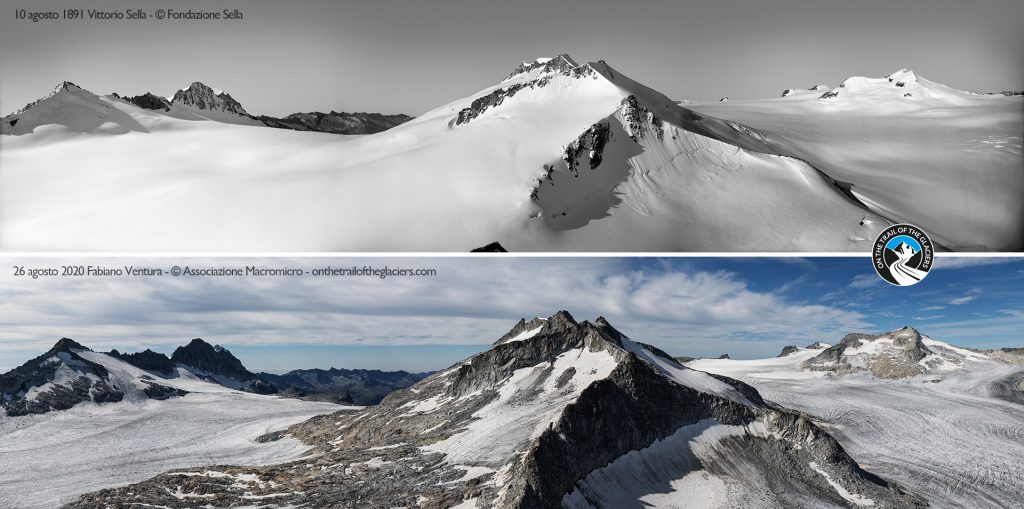
Glaciers are shrinking in size and mass worldwide. This is a story about one of these glaciers: the Adamello Glacier in the Italian Alps. It explores an intimate visit to this ice giant and reflects on its fate of melting and contamination. While doing so, it also contemplates on how we as a human community may change our relation to the glaciers of this world and what it would mean if we gave them a space in our hearts in addition to our minds.
This project was realized as part of the Master’s Degree of Environmental Humanities at the Ca’ Foscari University of Venice.
Click on the link below to read “On the Death of a Glacier”
Author: Tim Jonay Gutsche
-
March: Rhône Glacier
The Rhône Glacier, which extends from 2197 to 3600 m a.s.l., is located in the Valais, a canton in southern Switzerland, near the Italian border. The glacier has an average width of around 2 km and covers an area of approximately 17 km2. It is the largest glacier in the Urner Alps and the source of the Rhône river, which flows to the Mediterranean Sea.
In the 19th and early 20th centuries, the glacier was a major tourist attraction due to its tongue, which back then reached far down into the valley at Gletsch. The glacier is rapidly shrinking and is now only the fifth largest glacier in Switzerland.
In recent decades, the glacier has lost a considerable amount of its mass due to climate change. Its surface is dominated by large crevasses and ice caves. The melting of the glacier ice and the change in runoff regimes are causing serious geo-hydrological problems.
We owe these wonderful images to Hugues Thiebault, member of Mountain Wilderness France, and to his great-grandfather Emmanuel Bigeard, moved by a passion for the mountains that has been passed down through the centuries.
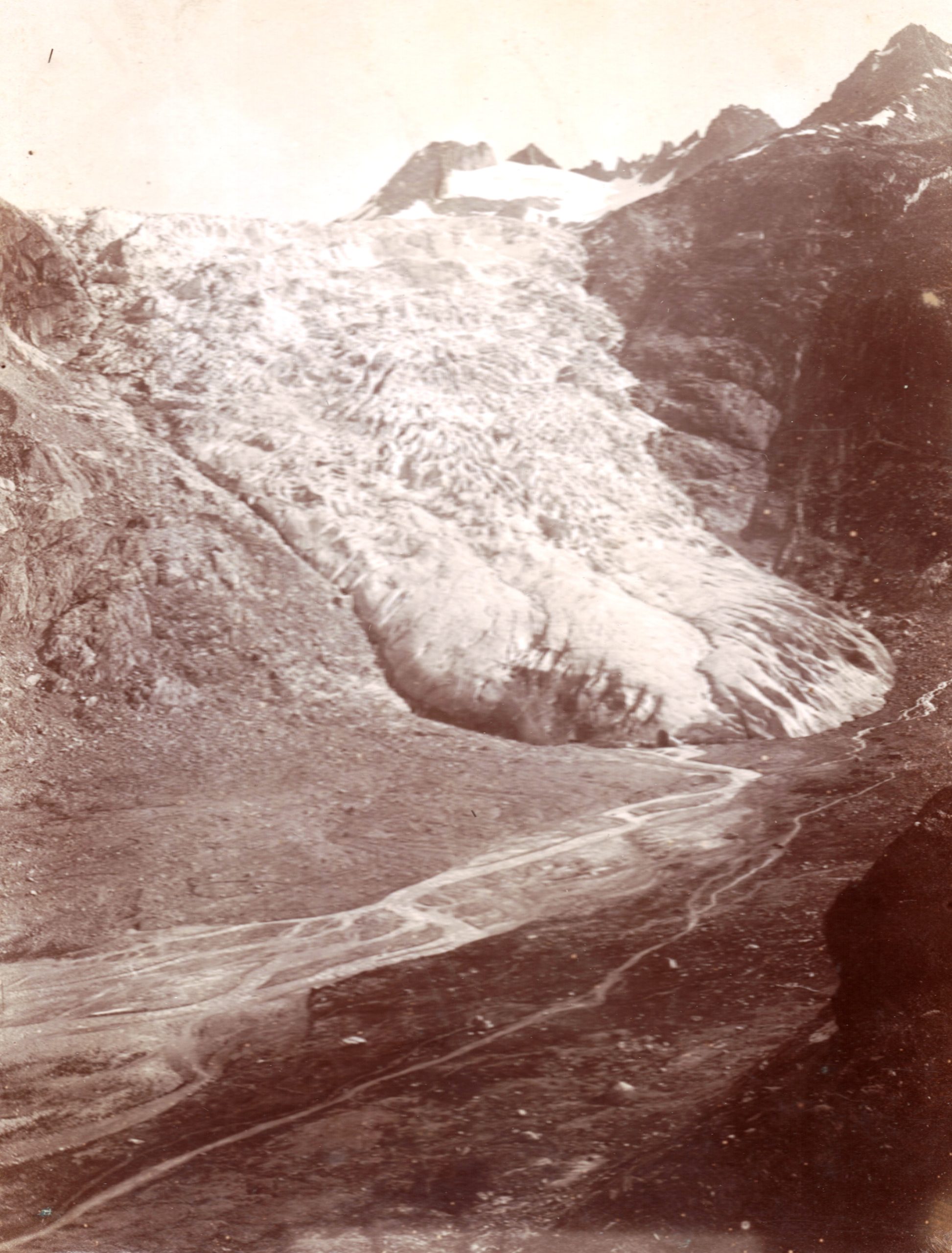
1898. Courtesy of Emmanuel Bigeard 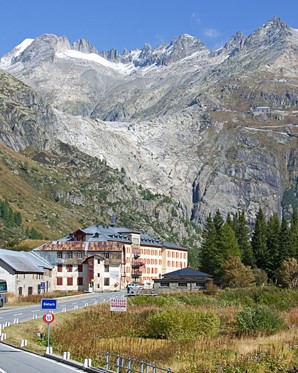
2023. Courtesy of Hugues Thiebault
-
February: Aneto Glacier
Aneto is the highest mountain in the Pyrenees and in Aragon, reaching a height of 3,404 m a.s.l. It stands in the Spanish province of Huesca, within the Posets-Maladeta Natural Park, just 6 km south of the French border. It forms the southernmost part of the Maladeta massif, which accounts for more than half of all glaciers in Spain, all located in the Pyrenees.
Its northern side holds the largest glacier in the Pyrenees, covering <0.5 km2 in 2022. The Aneto glacier is shrinking rapidly due to rising summer temperatures and reduced winter precipitations over the 20th century: it covered 1.067 km2 in 1981 and 0.79 km2 in 2005. It is estimated that it has lost more than half its surface area in the last 100 years, and that it may disappear around 2050.
Glacier surface loss in the Pyrenees is remarkable: there were 52 glaciers in 1850 and only 21 in 2020, corresponding to an area of 20.6 km2 and 2.3 km2 respectively, representing a loss of nearly 90% of the glaciated area.
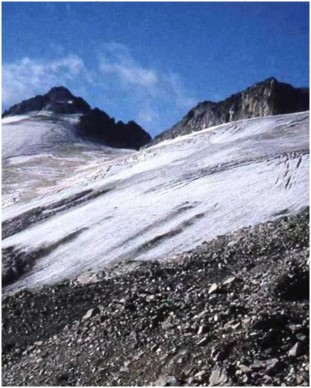
1986. Courtesy of Jordi Camins 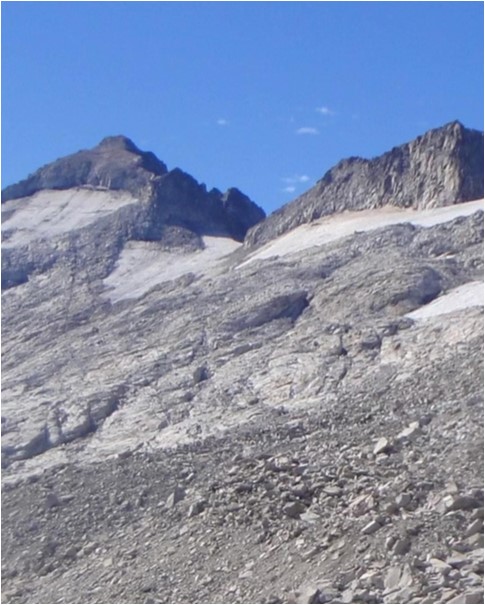
2002. Corutesy of Jordi Camins